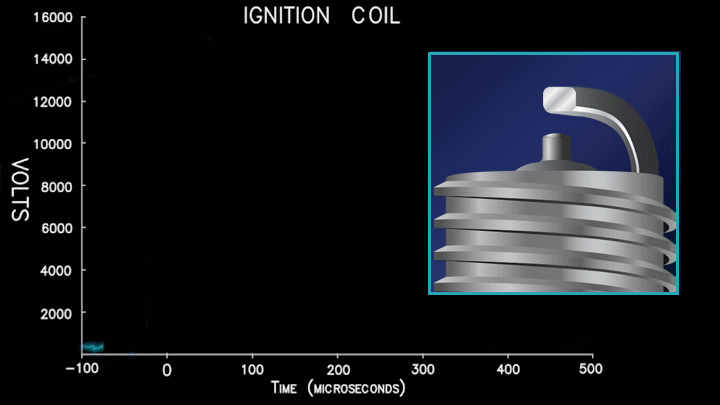What is Pulsed Power?
To form a spark, a vehicle’s ignition coil will slowly (relative to the process) inductively increase the voltage delivered to the spark plug until enough voltage is being delivered to allow electricity to bridge the air-fuel mixture between the center electrode and ground strap of the spark plug. This is known as achieving breakdown voltage. Pulstar Spark Plugs use a patented internal capacitor to store this energy prior to achieving breakdown voltage. When a spark is formed the energy stored in the capacitor is released in a quick and powerful pulse. This pulse is equal to 5,000,000 watts and takes approximately three nanoseconds to complete. The intense converts a portion of the gaseous air-fuel mixture into a highly excited plasma that conditions the fuel mixture to ignite immediately and burn efficiently.
Steady accumulation of energy followed by its rapid release can result in the delivery of a larger amount of instantaneous power over a shorter period of time (although the total energy is the same). Energy is typically stored within electrostatic fields (capacitors) [and others]… By releasing the stored energy over a very short interval (a process that is called energy compression), a huge amount of peak power can be delivered. For example, if one joule of energy is stored within a capacitor and then evenly released over one second, the peak power delivered would only be 1 watt. However, if all of the stored energy were released within one microsecond, the peak power would be one megawatt, a million times greater.
Captured by AVL using a process known as Schlieren high-speed photography, this video shows Pulstar’s 5MW pulse followed by the plasma affected fuel mixture burning at an increased rate compared to a conventional spark plug.

Energy delivered by the ignition coil prior to the spark is stored in Pulstar’s capacitor and rapidly released when breakdown voltage is achieved.

 0
0